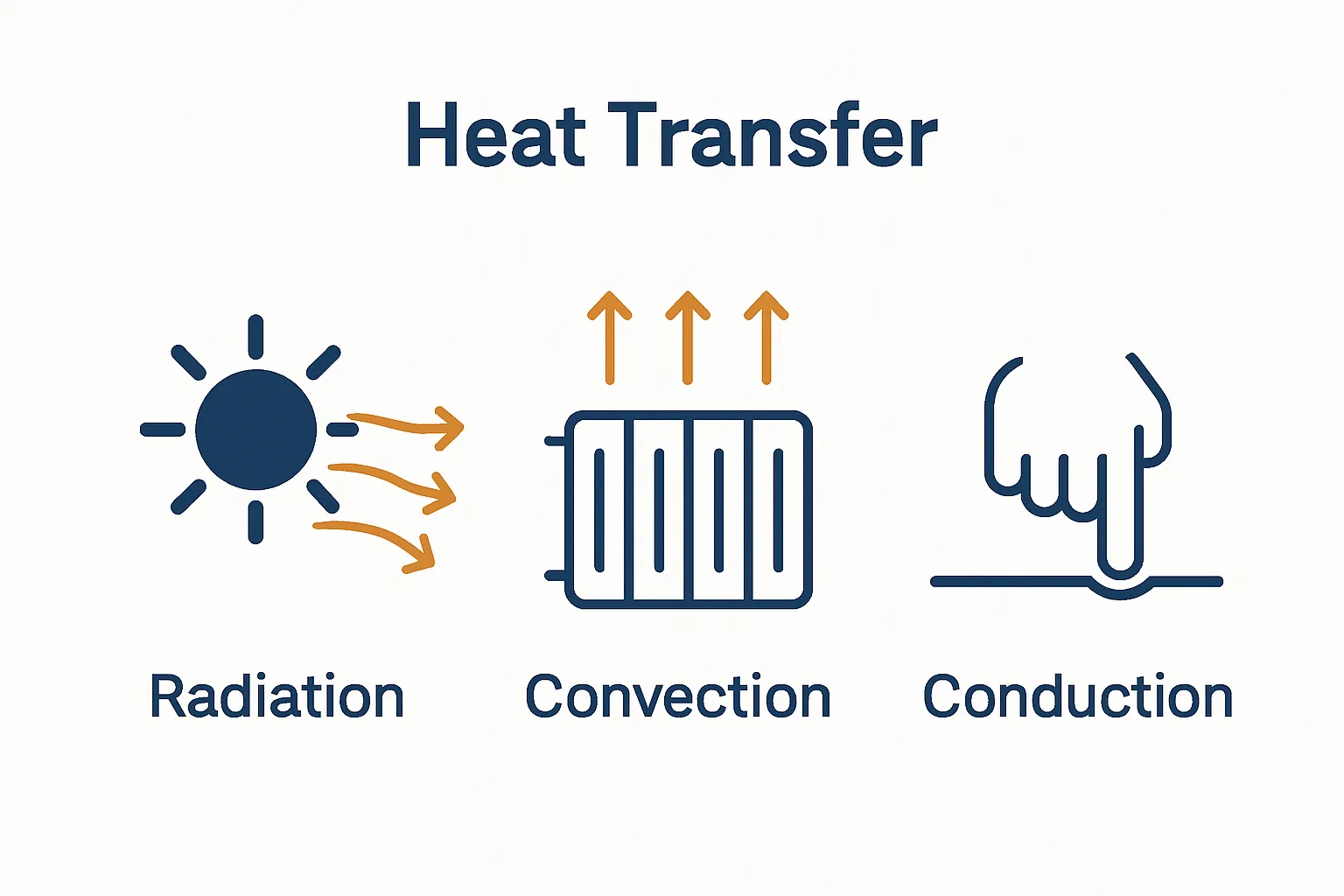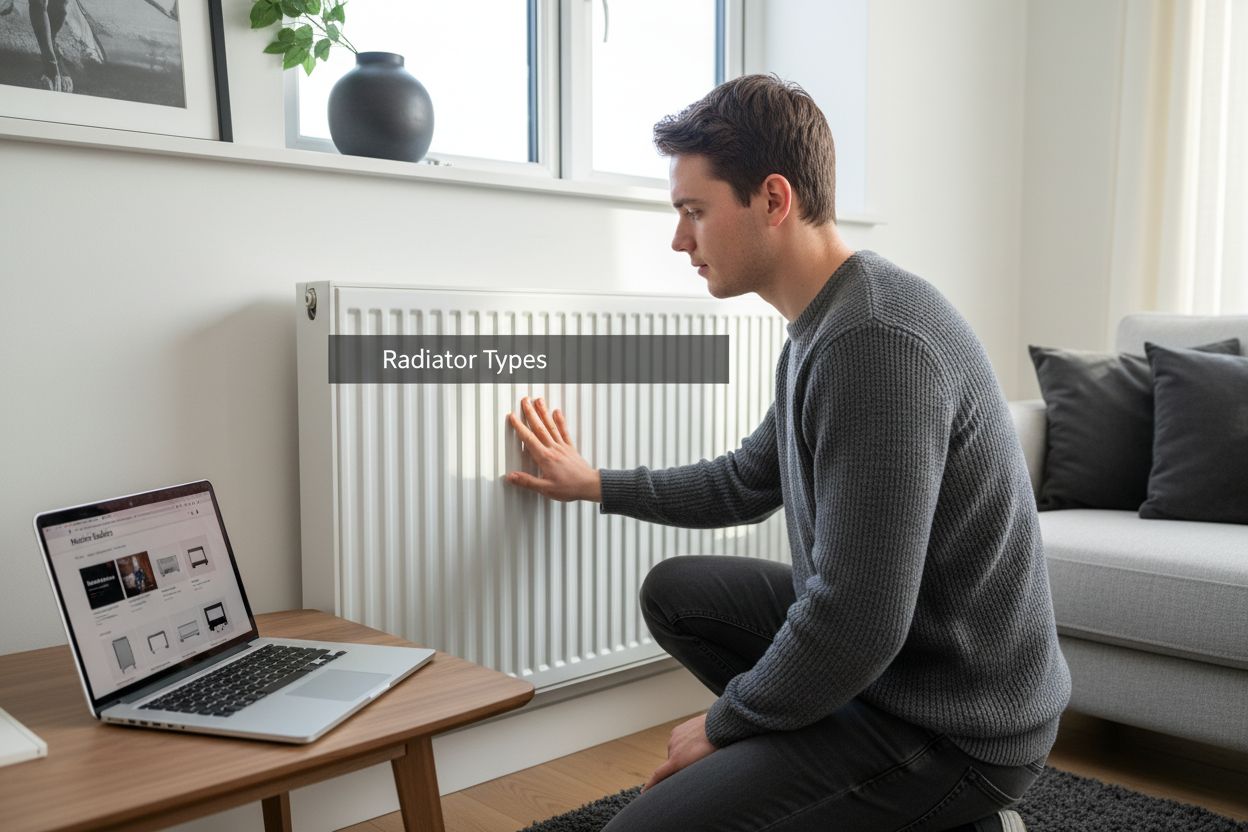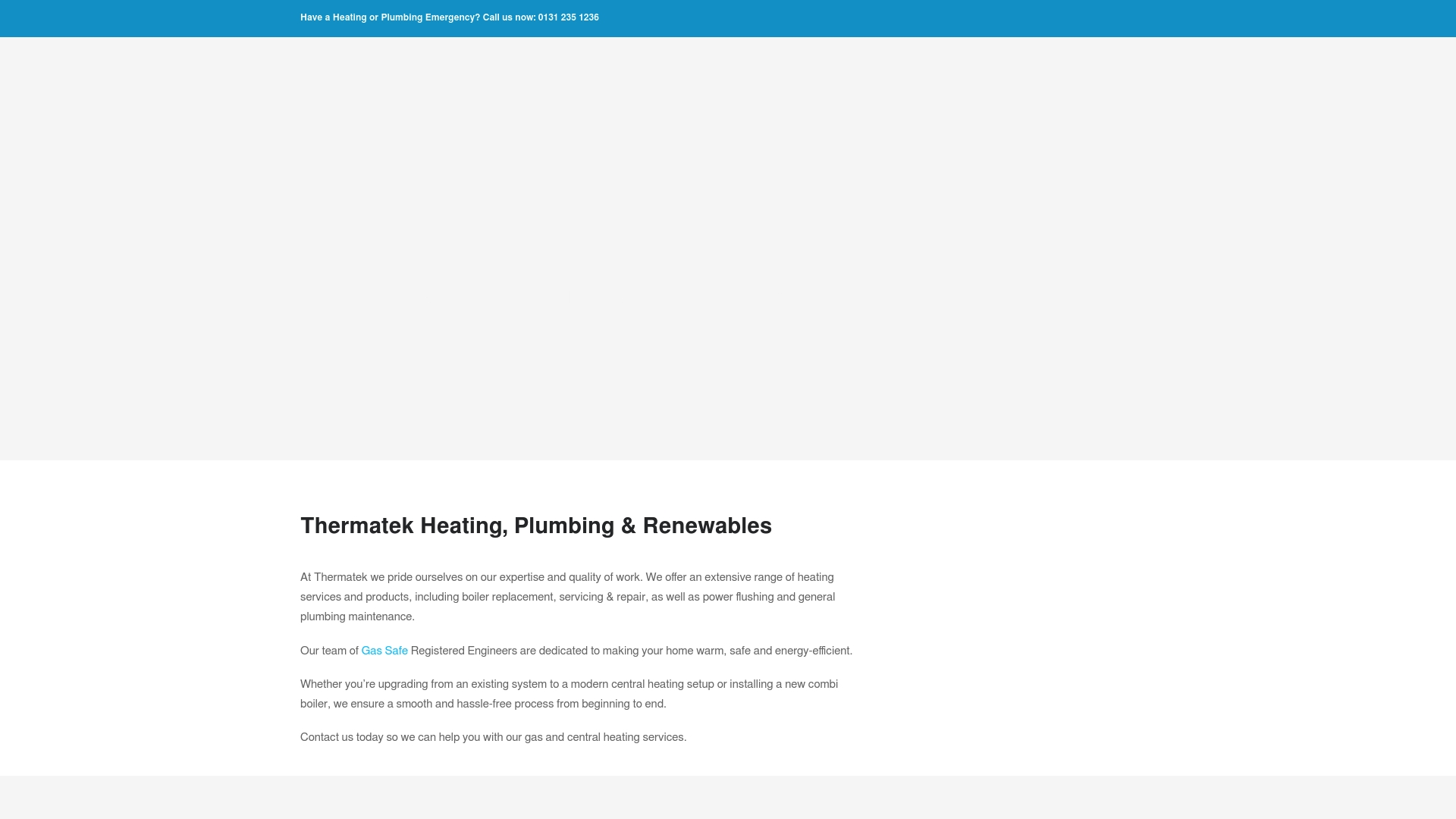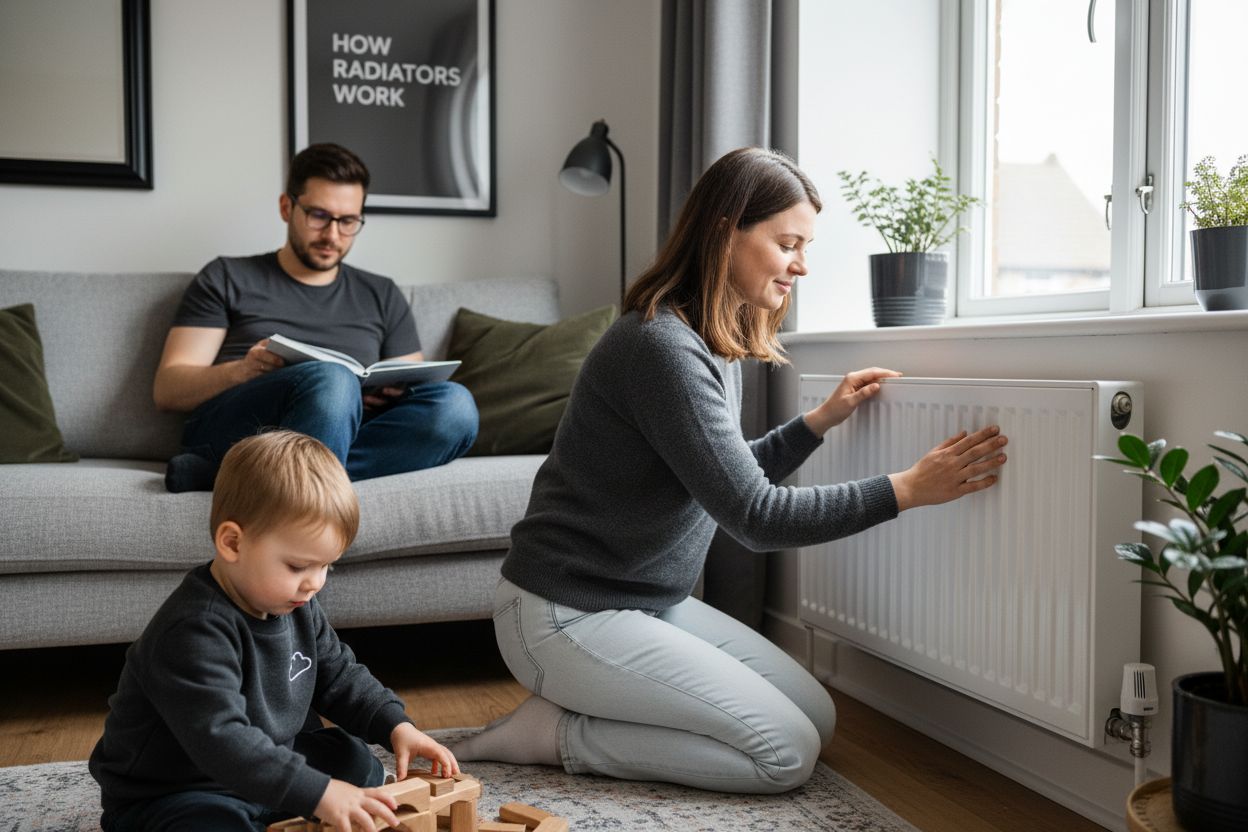Understanding How Radiators Work for Your Home
Radiators keep millions of British homes warm every winter and most people think of them as simple metal panels on the wall. Yet, modern radiators can improve home heating efficiency by up to 30% when properly installed. The surprise is that radiators do not create heat themselves at all. Instead they are quiet experts in moving and spreading warmth, not makers of it. This single difference changes how you see every radiator in your home.
Table of Contents
- What Is A Radiator And What Role Does It Play In Heating?
- Why Understanding How Radiators Work Is Important For Homeowners?
- How Do Radiators Transfer Heat Within A Space?
- Key Concepts Of Radiator Types And Their Applications
- Real-World Implications Of Radiator Efficiency And Maintenance
Quick Summary
| Takeaway | Explanation |
|---|---|
| Understanding radiators enhances energy efficiency. | Knowing how radiators work can save you 20-30% on heating bills through effective management. |
| Regular maintenance prevents costly repairs. | Early detection of issues, such as cold spots, can help avoid expensive breakdowns and extend system life. |
| Different radiator types serve distinct needs. | Choosing the right radiator material and design can optimise heating performance and accommodate your aesthetic preferences. |
| Heat transfer involves radiation, convection, and conduction. | Recognising these processes improves your ability to manage and optimise your home heating system effectively. |
| Inefficient radiators increase energy costs significantly. | Poorly maintained systems can lead to a 15% rise in energy consumption, impacting your financial expenditures. |
What is a Radiator and What Role Does it Play in Heating?
A radiator is a crucial heating device designed to transfer thermal energy from hot water or steam into surrounding living spaces, creating warmth and comfort within homes. Unlike common misconceptions, radiators do not generate heat independently but instead distribute heat efficiently through heat transfer mechanisms.
The Basic Mechanism of Heat Transfer
Radiators function on a fundamental principle of thermodynamics where heated water circulates through metal pipes and panels, releasing thermal energy into the surrounding environment. When hot water from your central heating system flows through the radiator’s internal pipework, the metal components quickly absorb and conduct this heat. Our guide on boiler functionality provides additional context about how heating systems generate this initial warmth.
The metal surfaces of radiators are strategically designed with maximum surface area to enhance heat dispersion. Typically constructed from materials like cast iron, steel, or aluminium, these surfaces rapidly warm up and radiate heat into the room through three primary methods:
- Radiation: Direct heat transmission through electromagnetic waves
- Convection: Warm air rising and circulating around the radiator
- Conduction: Heat transfer through physical contact with surrounding surfaces
Types and Functionality of Modern Radiators
Modern radiators have evolved significantly from their traditional predecessors. Contemporary designs incorporate advanced engineering principles to maximise energy efficiency and aesthetic appeal. According to research from the Energy Saving Trust, modern radiators can improve home heating efficiency by up to 30% when properly installed and maintained.
Whether you have traditional panel radiators, column radiators, or contemporary designer models, each type shares the fundamental purpose of distributing heat evenly across living spaces. Learn more about common radiator issues to understand potential challenges in maintaining optimal heating performance.
By understanding how radiators work, homeowners can make informed decisions about their heating systems, ensuring comfortable and energy-efficient home environments.
Why Understanding How Radiators Work is Important for Homeowners?
Comprehending the intricate mechanics of radiators goes beyond mere technical knowledge. It empowers homeowners to make informed decisions about their heating systems, potentially saving significant money and ensuring optimal home comfort throughout the year.
Financial and Energy Efficiency Implications
Understanding radiator functionality directly impacts household energy consumption and expenditure. Master balancing your heating systems can lead to substantial cost savings. According to research from the Energy Saving Trust, homeowners who actively manage their heating systems can reduce energy bills by up to 20-30%.
Knowledge about radiator performance enables strategic heating management through:
- Identifying potential inefficiencies in heat distribution
- Recognising when maintenance or upgrades are necessary
- Understanding optimal temperature settings for different rooms
Proactive Maintenance and Longevity
A deep understanding of radiator mechanics allows homeowners to detect potential issues before they escalate into costly repairs. Early recognition of problems such as cold spots, unusual noises, or uneven heating can prevent major system breakdowns.
Homeowners who comprehend their radiators can:
- Perform basic maintenance tasks independently
- Communicate more effectively with heating professionals
- Make informed decisions about system upgrades or replacements
By investing time in understanding how radiators work, you transform from a passive consumer into an active manager of your home’s heating infrastructure, ensuring comfort, efficiency, and long-term cost-effectiveness.
How Do Radiators Transfer Heat Within a Space?
Radiators employ sophisticated heat transfer mechanisms that transform thermal energy into comfortable living environments through three primary methods: radiation, convection, and conduction. Understanding these processes reveals how heat moves from the radiator into your living spaces.
Radiation: Direct Thermal Wave Transmission
Radiation represents the most direct heat transfer method, where thermal energy travels through electromagnetic waves directly from the radiator’s surface to surrounding objects and people. Infrared radiation allows heat to move through space without requiring physical contact, similar to how sunlight warms surfaces. Learn more about alternative heating technologies to compare different heat transfer approaches.
According to research from the Building Research Establishment, radiation can account for approximately 40% of the total heat transfer in a typical room, making it a crucial mechanism for creating warmth.
Convection: Warm Air Circulation Dynamics
Convection occurs when heated air becomes less dense and rises from the radiator, creating natural air circulation patterns. As warm air ascends, cooler air is drawn towards the radiator, creating a continuous thermal movement that gradually heats the entire space. This process ensures even heat distribution throughout rooms.
Key characteristics of convection heat transfer include:
- Warm air rising from radiator surfaces
- Cooler air being pulled towards the heat source
- Creating gentle, consistent room warming
Conduction: Direct Surface Heat Transfer
Conduction involves direct heat transfer through physical contact between the radiator and surrounding surfaces like walls, furniture, and flooring. Metal radiators with high thermal conductivity quickly absorb heat from hot water and transfer it to nearby objects, creating secondary warming effects.
By understanding these intricate heat transfer mechanisms, homeowners can optimise their heating systems, ensuring efficient and comfortable indoor environments. The interplay of radiation, convection, and conduction transforms a simple metal device into a sophisticated thermal management tool.
Below is a comparison of the three primary heat transfer mechanisms used by radiators, summarising their processes and key contributions to home heating.
| Heat Transfer Method | Description | Contribution to Room Heating |
|---|---|---|
| Radiation | Transfer of heat via electromagnetic (infrared) waves | Directly warms objects and occupants in the room |
| Convection | Circulation of warm air rising and cool air being drawn in | Ensures even heat distribution throughout the room |
| Conduction | Heat transfer through physical contact with surfaces | Warms adjacent walls, floors, or furniture |

Key Concepts of Radiator Types and Their Applications
Radiator technology has evolved significantly, offering diverse designs tailored to specific heating requirements and aesthetic preferences. Understanding the nuanced characteristics of different radiator types enables homeowners to make informed decisions about their heating infrastructure.
Traditional Panel Radiators: Versatile Heating Solutions
Panel radiators represent the most common heating method in residential properties. Characterised by their flat, rectangular design, these radiators efficiently distribute heat through convection and radiation. Explore alternative heating technologies to compare different warming approaches.
According to research from the Heating and Hot Water Council, panel radiators remain the most prevalent heating solution in UK households, offering:
- Cost-effective installation
- Flexible sizing options
- Straightforward maintenance
- Compatibility with most central heating systems
Specialist Radiator Designs: Performance and Aesthetics
Beyond traditional panels, contemporary radiator designs cater to specific functional and decorative requirements. Column radiators, featuring multiple vertical pipes, provide enhanced heat distribution and a classic architectural aesthetic. Designer radiators transform heating elements from purely functional devices into statement pieces that complement interior design.
Specialist radiator types include:
- Vertical radiators maximising wall space in compact rooms
- Aluminium radiators offering rapid heat response
- Towel radiators combining heating with practical bathroom functionality
Material Considerations and Thermal Performance
The material composition significantly influences a radiator’s thermal efficiency and durability. Cast iron radiators retain heat exceptionally well but warm slowly, while aluminium radiators offer rapid heating and lightweight construction. Steel remains a popular middle-ground option, balancing performance and affordability.
By understanding these radiator variations, homeowners can select heating solutions that precisely match their spatial, aesthetic, and thermal requirements, ensuring optimal comfort and energy efficiency.
The following table organises distinctive types of radiators, highlighting their primary features and typical applications to assist homeowners in making informed decisions for their heating needs.
| Radiator Type | Key Features | Typical Applications |
|---|---|---|
| Panel Radiator | Flat, rectangular, efficient, widespread use | Most UK domestic properties, living areas, bedrooms |
| Column Radiator | Multiple vertical columns, classic appearance | Heritage homes, period properties, style-focused rooms |
| Designer Radiator | Contemporary shapes/finishes, decorative appeal | Modern interiors, feature walls |
| Vertical Radiator | Tall, narrow design, space-saving | Small or narrow spaces, kitchens, hallways |
| Towel Radiator | Rails for drying towels, combines heating and utility | Bathrooms, en suites |
| Aluminium Radiator | Lightweight, rapid heat response | Energy-efficient upgrades, rooms needing fast warmth |
| Cast Iron Radiator | Heavy, high heat retention, traditional look | Older homes, rooms requiring sustained heat |

Real-World Implications of Radiator Efficiency and Maintenance
Radiator performance extends far beyond theoretical concepts, directly impacting household energy consumption, comfort, and long-term financial expenditure. Understanding the practical dimensions of radiator efficiency transforms heating from a passive utility to an actively managed home system.
Economic Impact of Radiator Performance
Inefficient radiators can significantly escalate household energy expenses, creating unnecessary financial strain. Explore strategies for energy-efficient heating to optimise your home’s thermal management. According to research from the Energy Saving Trust, poorly maintained radiators can increase energy consumption by up to 15%, translating to substantial annual costs.
Key economic considerations include:
- Potential energy bill reductions through regular maintenance
- Long-term savings from proactive system management
- Avoiding costly emergency repairs through preventative care
Performance Degradation and System Health
Radiators accumulate sediment, air pockets, and mineral deposits over time, which compromise their heating efficiency. Sludge buildup can create uneven heat distribution, cold spots, and increased strain on your central heating system. Professional interventions like power flushing can restore radiator performance and extend system lifespan.
Common performance indicators suggesting maintenance requirements:
- Inconsistent room temperatures
- Unusual noises during heating cycles
- Radiators taking longer to warm up
- Visible corrosion or leakage
Environmental and Comfort Considerations
Beyond economic factors, radiator efficiency directly influences home comfort and environmental sustainability. Well-maintained radiators ensure consistent thermal environments while reducing unnecessary energy consumption. Efficient heating systems contribute to lower carbon emissions, supporting broader climate protection goals.
By recognising radiators as dynamic systems requiring periodic attention, homeowners can achieve optimal thermal comfort, minimise energy waste, and maintain a responsive, efficient heating infrastructure.
Unlock Lasting Comfort with Expert Radiator Solutions
Understanding problems like uneven heat, cold spots or rising bills is only the first step. The article highlighted how poor radiator performance can quickly disrupt comfort, waste energy and cause unnecessary expenses. If you have noticed issues with heat transfer or want to make sure your system runs efficiently year-round, now is the time to act. Our Gas Safe Registered engineers use advanced methods like power flushing and bespoke system upgrades to restore and maintain the best possible performance.

Let Thermatek bring reliable warmth and energy savings to your home. For confident help with your heating system, including repair, maintenance and full upgrades, visit our main website and request your free personalised quote. Secure professional advice and trusted service so you can enjoy efficient, worry-free heating from now on.
Frequently Asked Questions
How do radiators transfer heat in a room?
Radiators transfer heat through three primary mechanisms: radiation, convection, and conduction. Radiation involves direct thermal wave transmission, convection circulates warm air, and conduction transfers heat through physical contact with surrounding surfaces.
What types of radiators are available for home heating?
There are several types of radiators, including traditional panel radiators, column radiators, and designer models. Each type has its own unique features and aesthetic appeal, catering to different heating needs and interior designs.
Why is proper maintenance of radiators important?
Proper maintenance of radiators helps prevent inefficiencies such as cold spots and uneven heating. Regular care can also reduce energy bills, extend the lifespan of the heating system, and ensure optimal comfort within the home.
What are the benefits of understanding how radiators work?
Understanding radiator functionality allows homeowners to manage heating systems effectively, identify inefficiencies, perform basic maintenance, and make informed decisions about potential upgrades or replacements.

